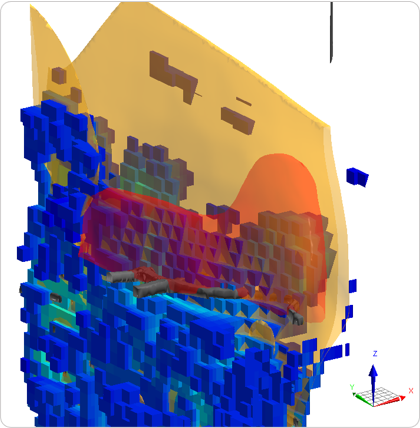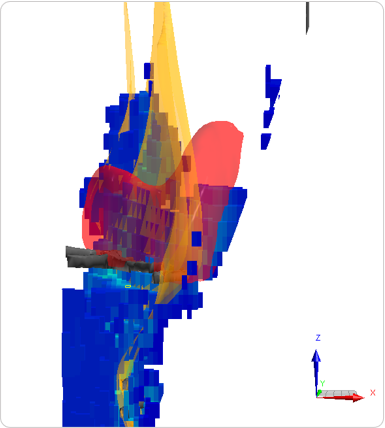BHP
Nickel West
Blind trial successfully imaging a 3-7m thick deposit at 200m depth
OVERVIEW
This blind* test of muon tomography demonstrated the effectiveness of the technique to image a high-grade nickel deposit. The results agreed with existing drill data and revealed additional characteristics of the deposit such as the weathering profile and indication of a previously unknown branch of the orebody.
*Data that validated our results was only provided after the survey and analysis were complete.
SITUATION
The Cliffs nickel deposit is an underground narrow-veined, vertically disposed nickel sulphide deposit situated 700km NE of Perth, Australia, near the Mount Keith operation. The deposit lies within the Agnew-Wiluna greenstone belt, which also hosts other significant nickel sulphide deposits. BHP’s Nickel West operation is a fully integrated mine-to-market nickel business that mines and processes high-grade nickel sulphide ore from Cliffs and adjacent sites (Mt. Keith, Leinster, Yakabindie). There was some drill data available for the project area, but this was not provided before the muon tomography survey was performed.
IDEON SOLUTION
Ideon developed simulations in 2019 and deployed five muon detectors to Australia in spring 2020, navigating unrest in Hong Kong, quarantine requirements in Australia, and emerging evidence of what was to become the COVID-19 pandemic. Ideon staff traveled to the site to deploy the detectors, which were situated about 30m apart in an underground drift approximately 200m deep in the Cliffs mine. Data were gathered over a period of 60 days, with collection ending in June 2020. Data intake and analysis was conducted remotely in Canada throughout this period to verify quality and calibration, and to develop radiographic images of subsurface density with continuously improving clarity.
OUTCOME
Imaging results closely matched the known data signature for the target area, with high-resolution imaging yielding a more significant subsurface anomaly than expected, which corresponded to a thicker mineralization of the deposit and an additional lobe that had not been previously mapped.
Tomographic reconstruction yielded a 3D map of density that conformed well to the mineralization shell derived from extensive drilling through the ore body. The results proved the technology to the client and they have since redeployed the Ideon solution in an exploration context at > 800m.
BHP Nickel West, Cliffs Mine, Western Australia

“At Nickel West, we are excited because we’ve now seen what the detectors can do and we know that muon tomography has the potential to change the way we explore.”
Marcel Menicheli,
Superintendent of Geoscience
BHP Nickel West

Commodity: Underground narrow-veined nickel deposit (Volcanic-Komatiite-type deposit)
Location: Western Australia


The blue block model is derived from BHP-provided drill data (provided post-survey). The light orange wireframe represents the sulphide shell model. The red shape is the voxel inversion from muon data with no prior constraints. The muon data corresponds quite well to density block model and identifies an additional lobe of the deposit that had not been previously mapped.

